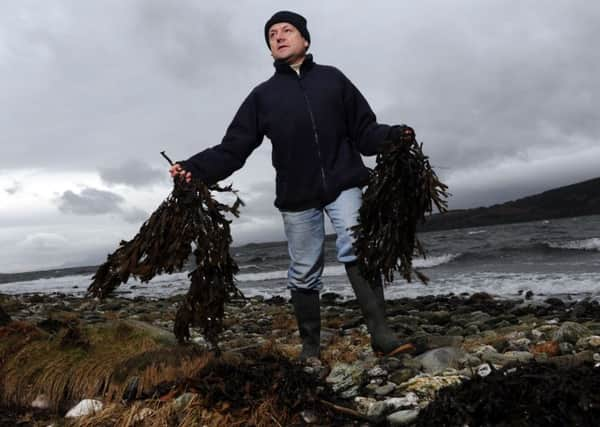Ilona Amos: Growing seaweed industry must steer clear of tangles


Seaweed would have been a staple for many of our ancestors because it is plentiful and pretty easy to collect. But what the earliest Scots may not have been aware of was the high nutritional value of the plants they were eating.
Richness in iodine, calcium, antioxidants, minerals and amino acids has seen seaweed elevated to the ranks of superfood, with celebrity chefs and health-conscious A-listers hailing its health benefits. Jamie Oliver, Gwyneth Paltrow and Victoria Beckham are said to be fans.
Advertisement
Hide AdAdvertisement
Hide AdBut the current interest in seaweed is not driven solely by its superfood status or a rising trend for wild foraging. It has traditionally been used as a natural fertiliser, but is nowadays also used in cosmetics, paints and industrial products such as glues, dyes and gels. It is also highly prized for medicinal purposes, while its alginates are used as a food thickening agent.
There is also ongoing research into its potential as a biofuel since it can be fermented into ethanol, which can be mixed with petrol, or used in an anaerobic digestion plant to create methane gas.
Globally, the seaweed aquaculture sector has been developing at an exponential rate. Production has more than doubled recently, with output increasing from 10.5 million tonnes in 2000 to 28.4 million tonnes in 2014. China is the top producer, accounting for more than 50 per cent of the total farmed harvest. There has been fast growth too in South America and East Africa.
Lagging behind are Europe and North America, where most seaweed output is from wild harvest. Around 3,000 dry tonnes were gathered this way in the UK in 2013.
And 1,400 years after a poem mentioned monks collecting dulse from the rocks around Iona, seaweed is enjoying a renaissance in Scotland.
Researchers at the Oban-based Scottish Association for Marine Science (Sams) last year launched the country’s first ever commercial-scale seaweed farm, growing several native varieties. The pioneering facility, off the Argyll coast, is being run as a demonstration project to help shape the country’s emerging seaweed cultivation sector. At capacity, the farm could produce around 25 tonnes of the marine vegetables every year.
Scientists from the institute have just co-authored a new report warning of the dangers of over-cultivation and diseases and calling for the sector to learn from mistakes made in fish-farming and agriculture. They say safeguards should be taken against “unforeseen ecological and societal consequences”.
The report comes not long after a study for the UK government’s Department for Environment, Food and Rural Affairs recommended a network of seaweed farms should be set up around the country to satisfy growing demand.
Advertisement
Hide AdAdvertisement
Hide AdSo whether you want to know more about the health benefits of seaweed, learn to cook with it or set up your own farm, some of the country’s leading experts will be on hand to help at a special gathering in the capital this weekend.
The two-day Seaweed for Health conference is returning to the Botanic Garden Edinburgh for the fourth year in a row. Staged by the Seaweed Health Foundation, it attracts about 1,000 visitors to talks exhibits and demonstrations by the major players in the industry.